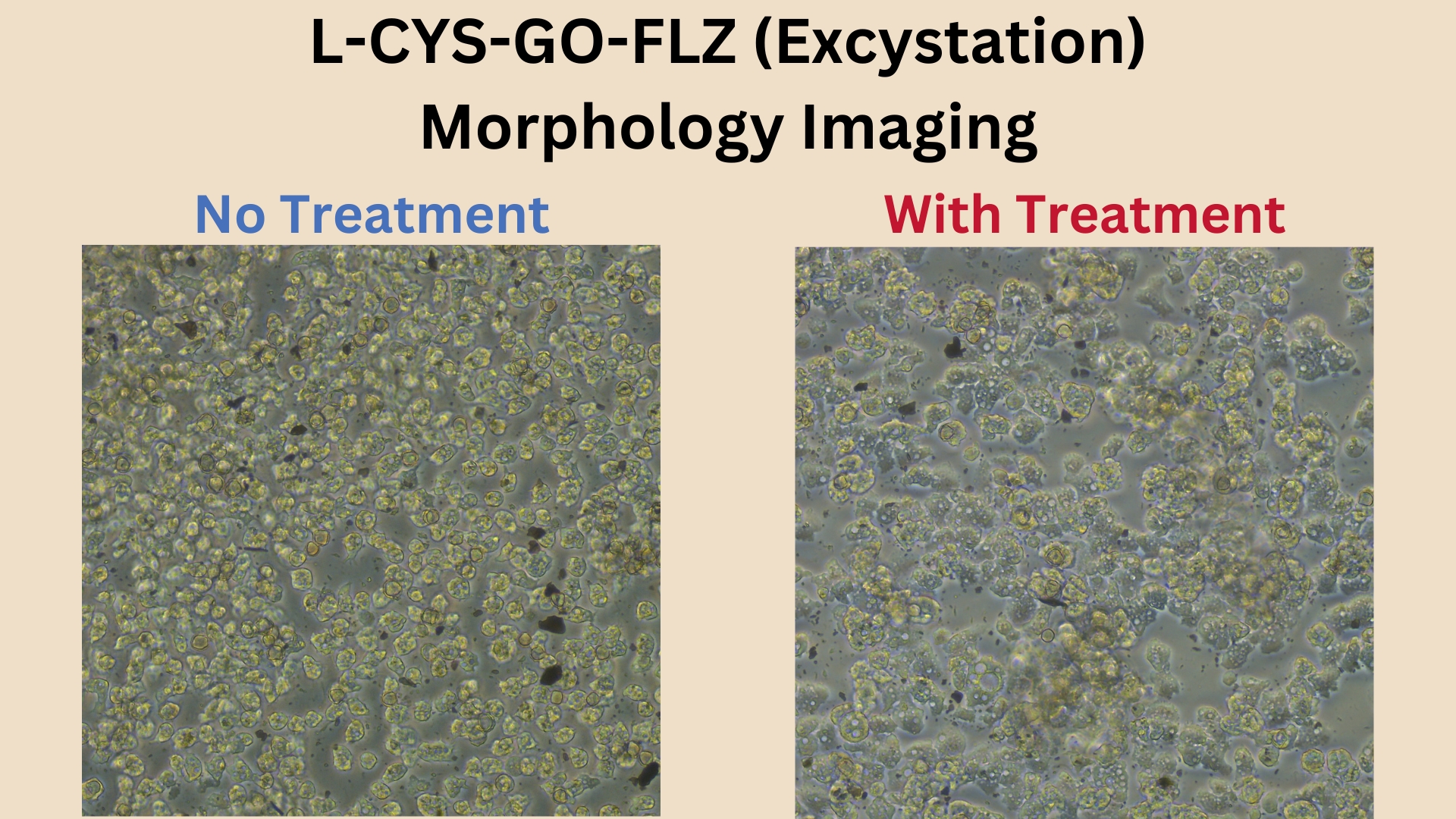Mazen Emad Mohamed Wardany
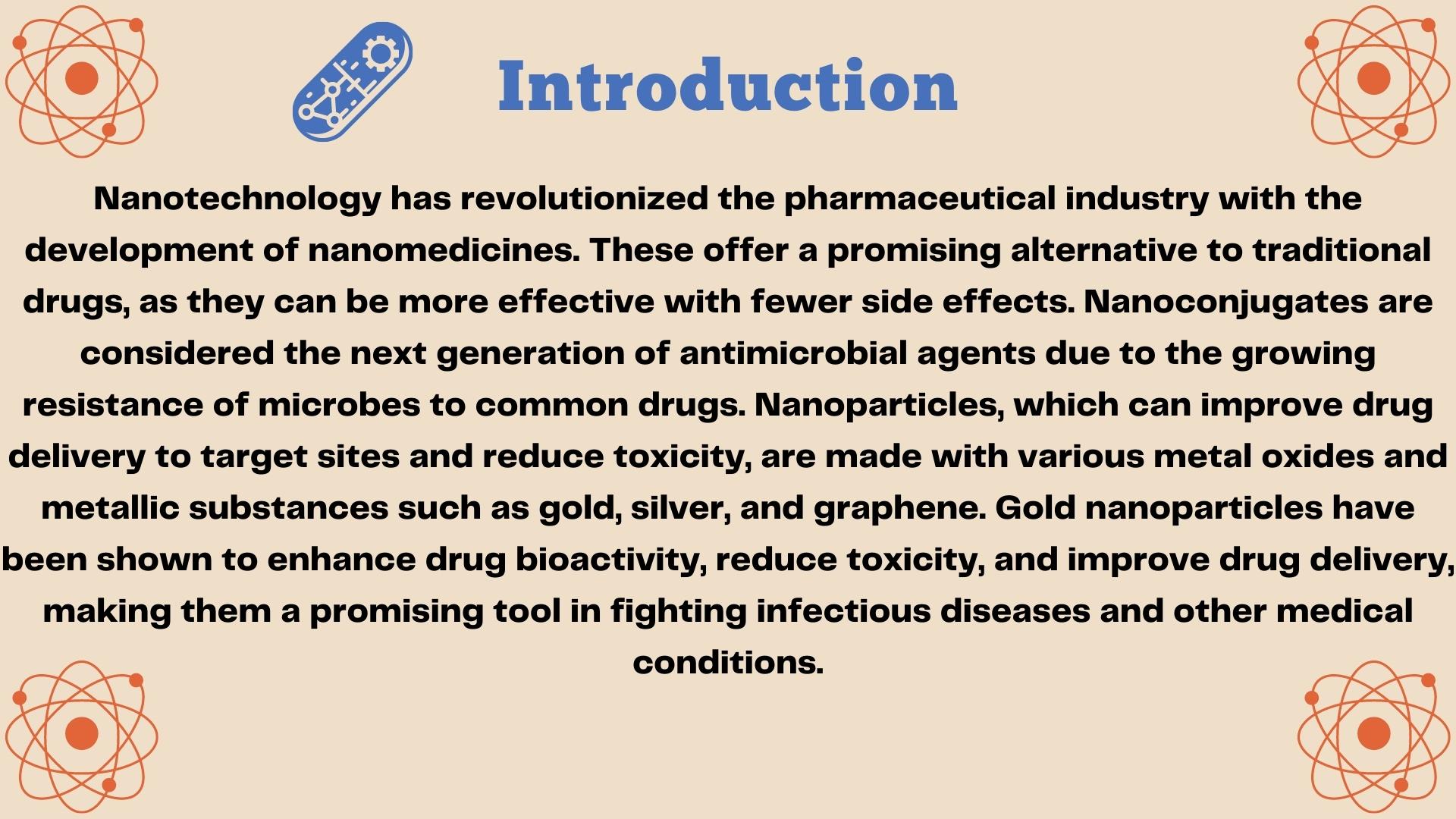
Image settings
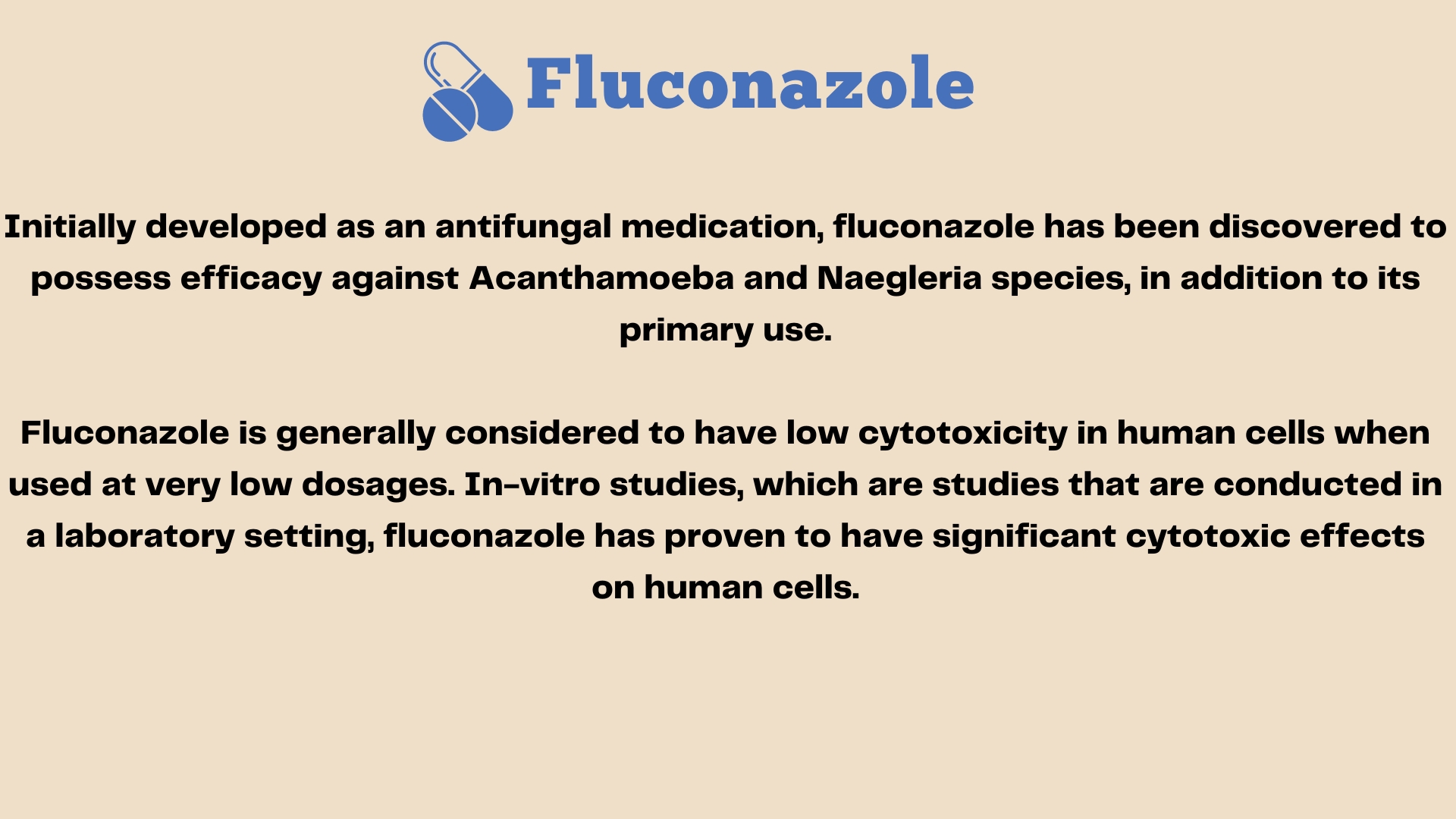
Image settings
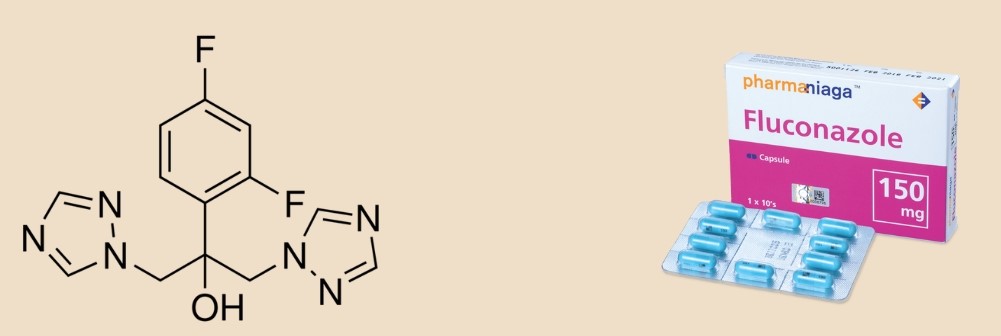
Image settings
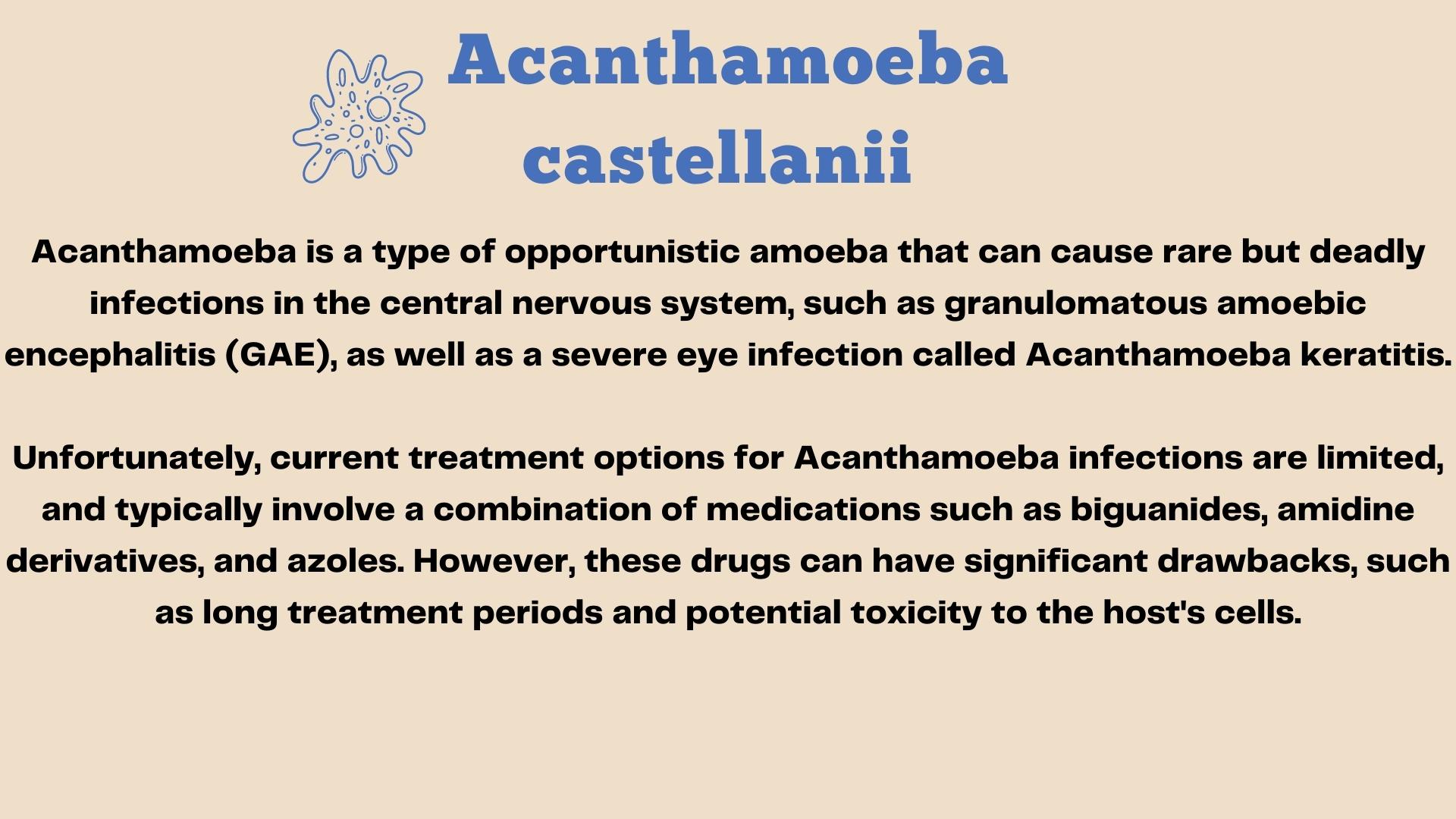
Image settings
Video settings
Video settings
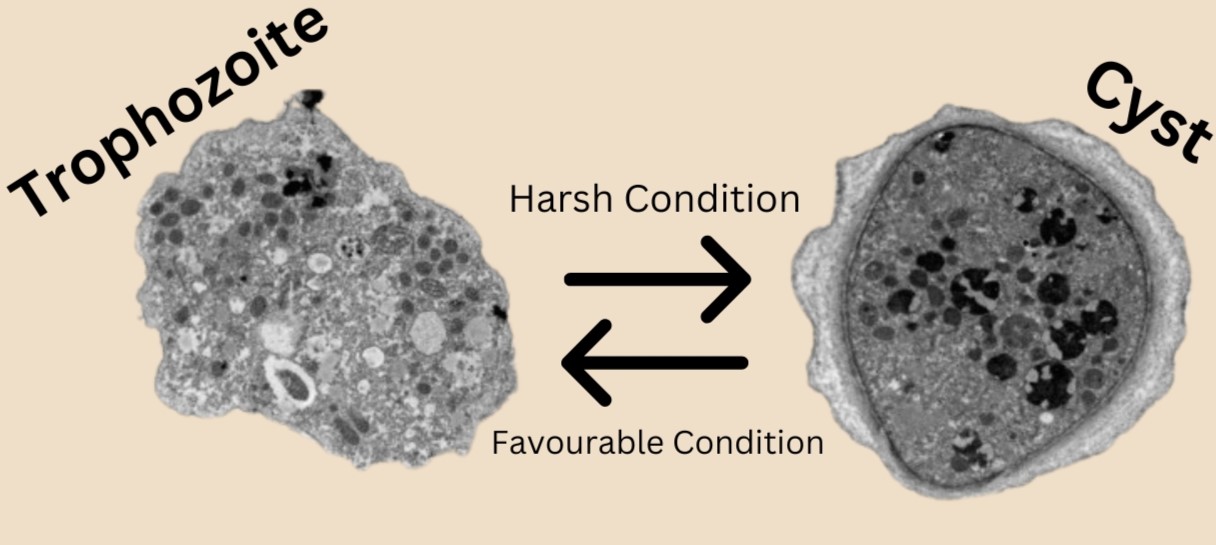
Image settings
Video settings
Image settings
Image settings
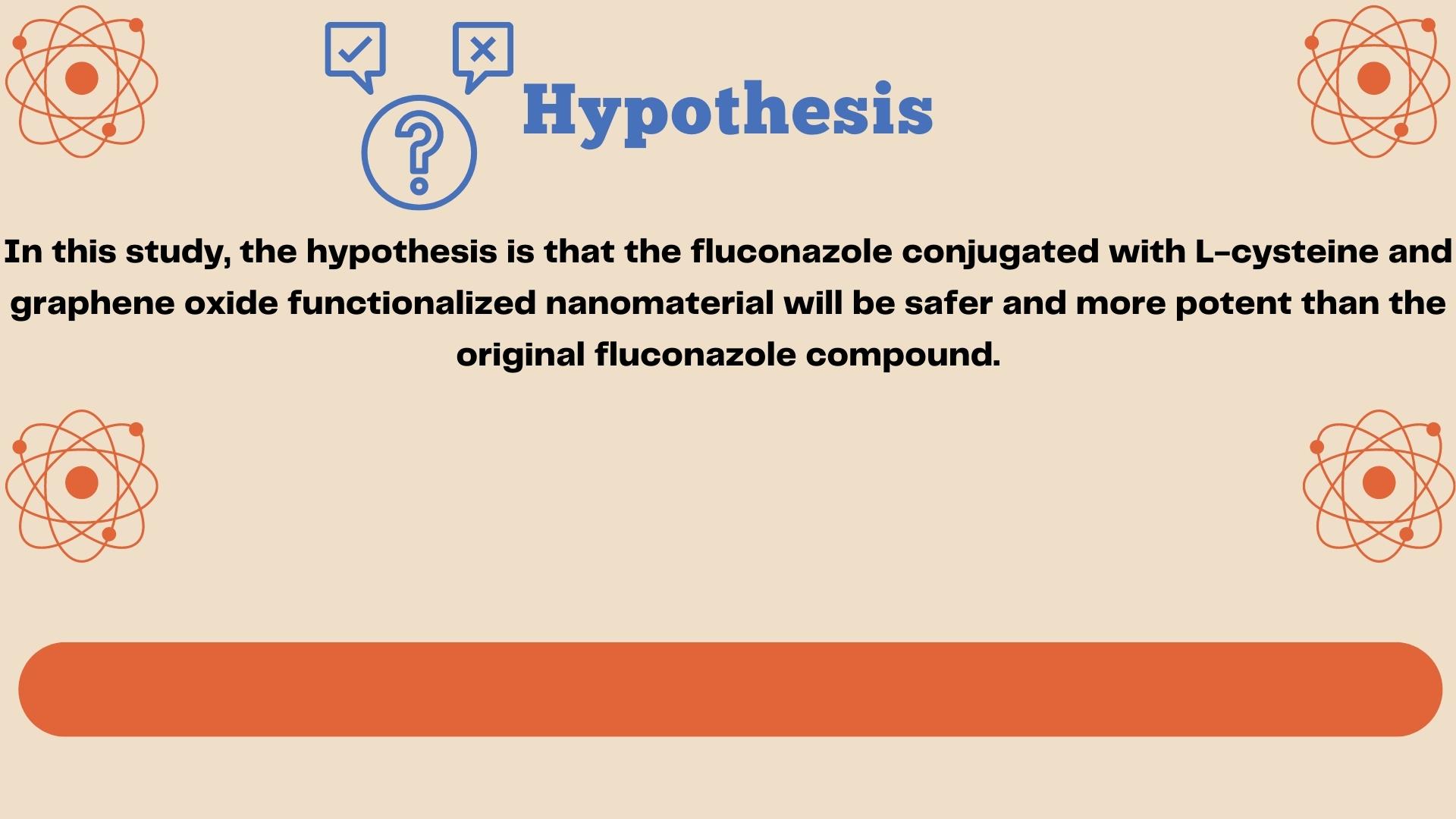
Image settings
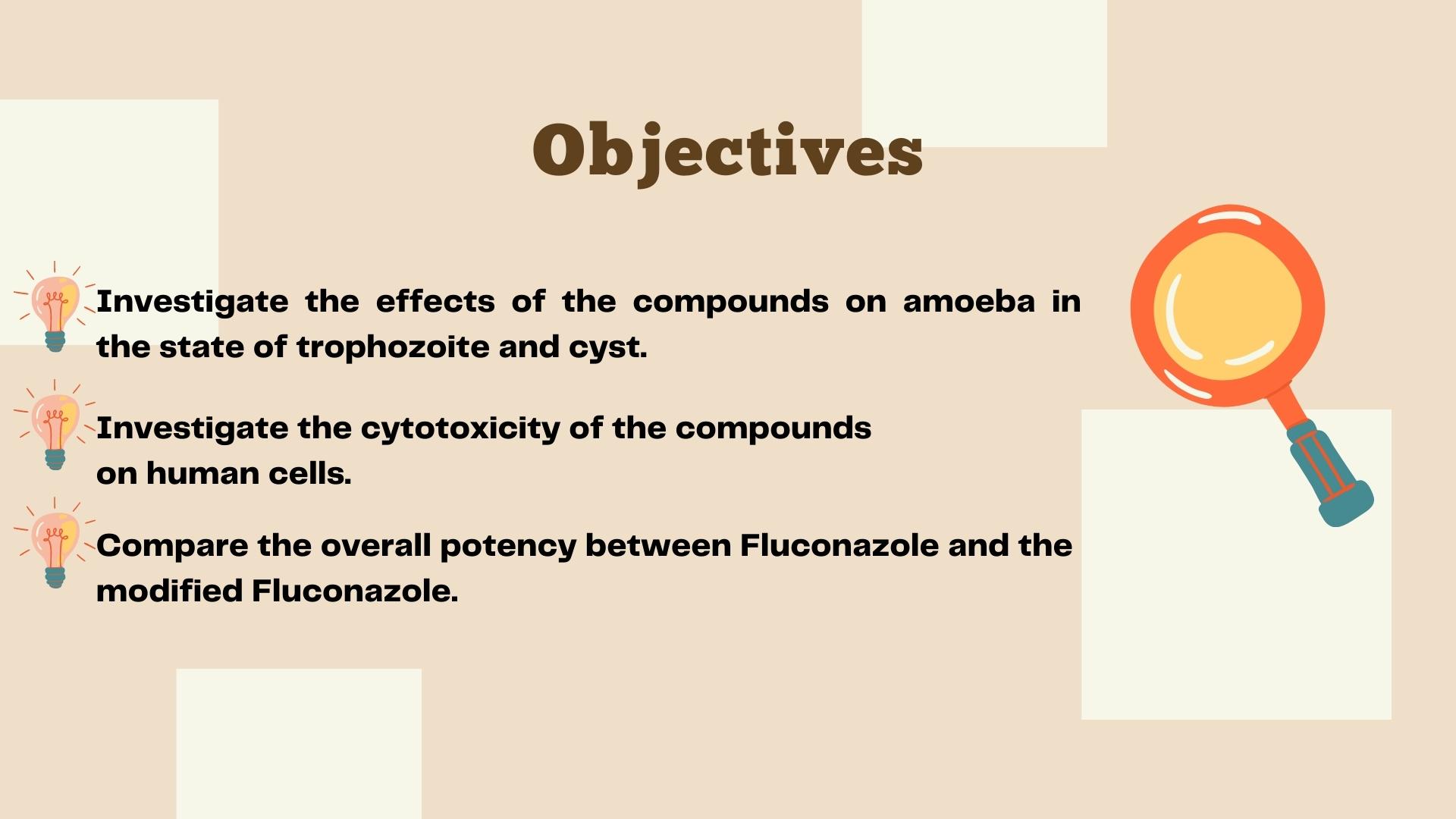
Image settings
Image carousel settings
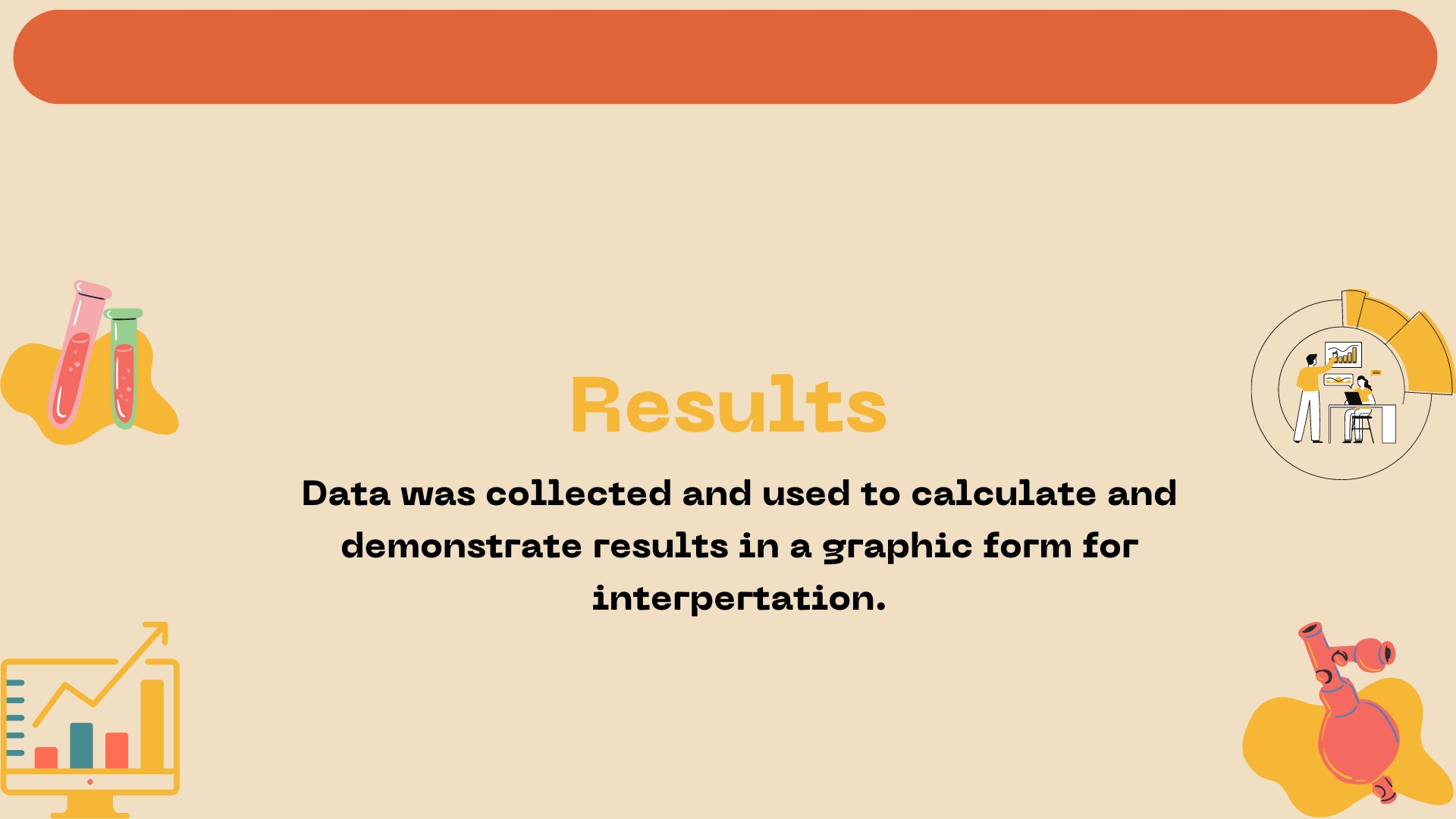
Image settings
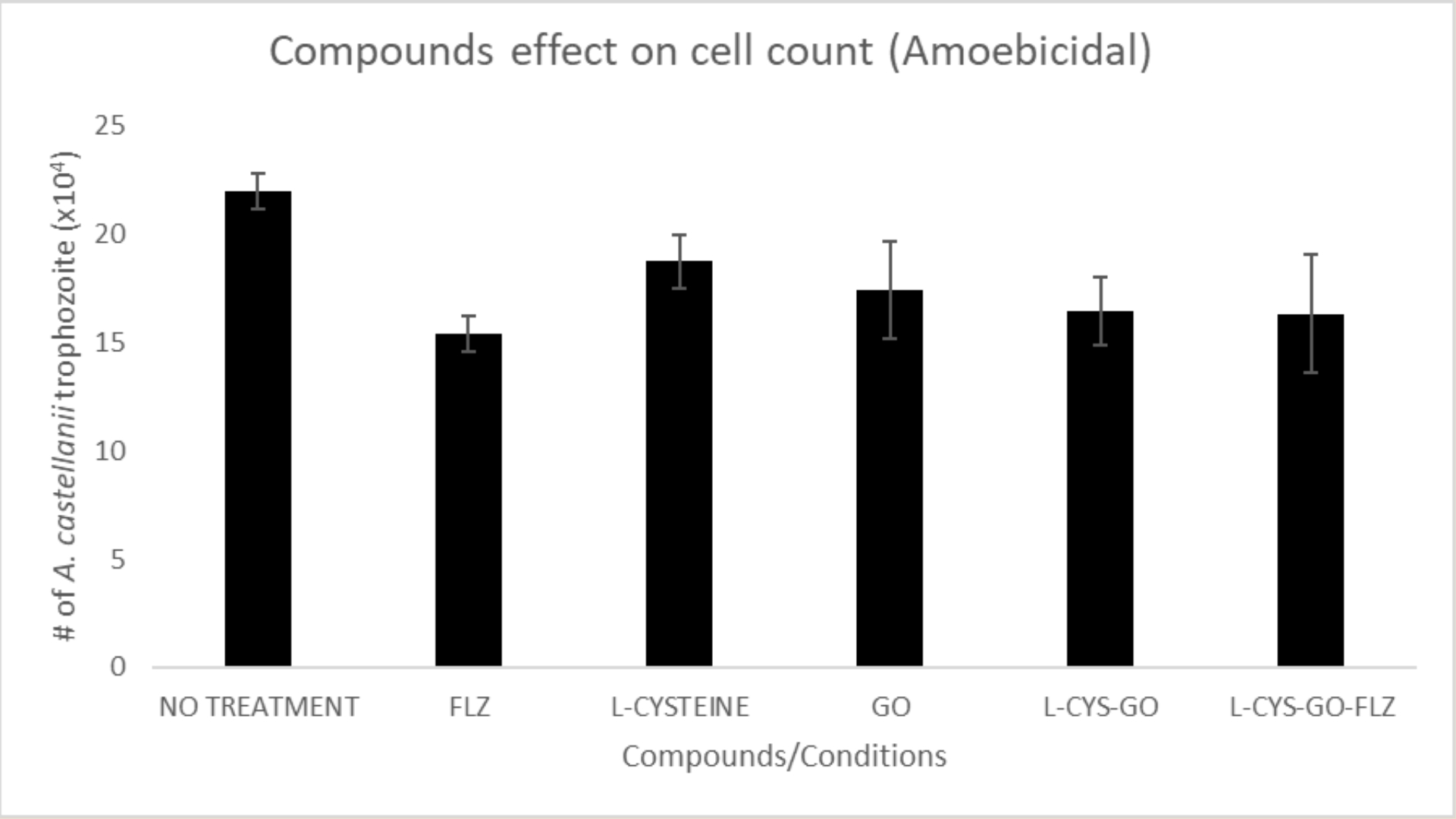
Image settings
Figure#1: (Amoebicidal Assay) Compounds effect on cell count of A. castellanii Trophozoites.
This Assay was performed to evaluate the potential of the compounds to kill or inhibit the growth of the amoeba.
As shown in Figure 1 Amoebicidal Assay, Fluconazole has slightly more effect on the A. castellanii Trophozoites than Fluconazole loaded with graphene oxide.

Image settings
Figure#2: (Amoebistatic Assay) Compounds effect on cell count of A. castellanii Trophozoites.
This Assay was performed to evaluate the potential of the compounds to slow down or stop the growth of the amoeba.
As shown in Figure 2 for Amoebistatic Assay, Fluconazole loaded with graphene oxide has slightly more effect than Fluconazole in eradicating A. castellanii Trophozoites.
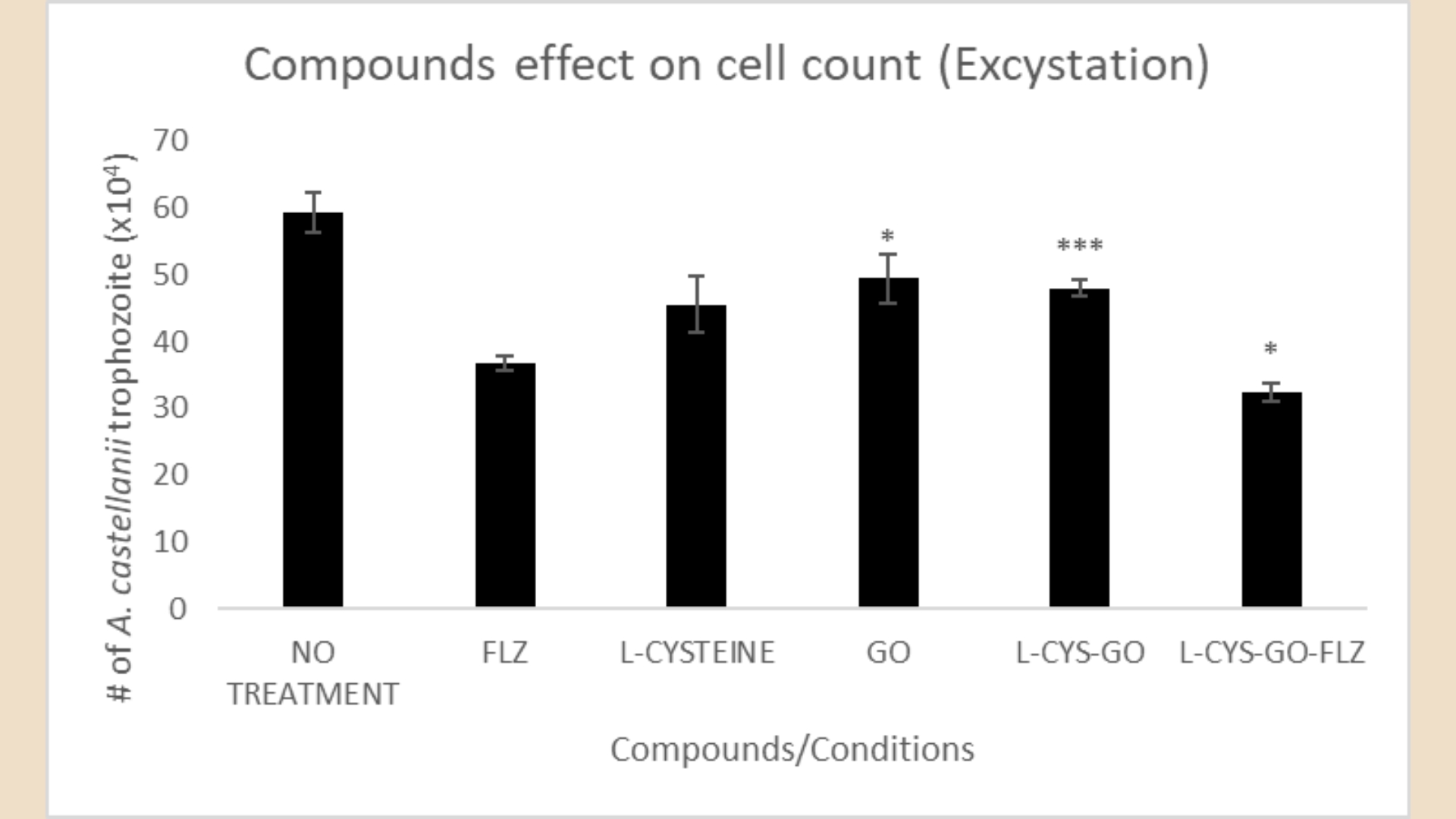
Image settings
Figure#3: (Excystation Assay) Compounds effect on cell count of A. castellanii Trophozoites.
This Assay was performed to evaluate the potential of the compounds to eliminate or prevent the excystation process (Cyst to Trophozoite) of the amoeba.
As shown in Figure 3 for Excystation Assay, Fluconazole loaded with graphene oxide has slightly more effect than Fluconazole in eradicating A. castellanii Trophozoites.
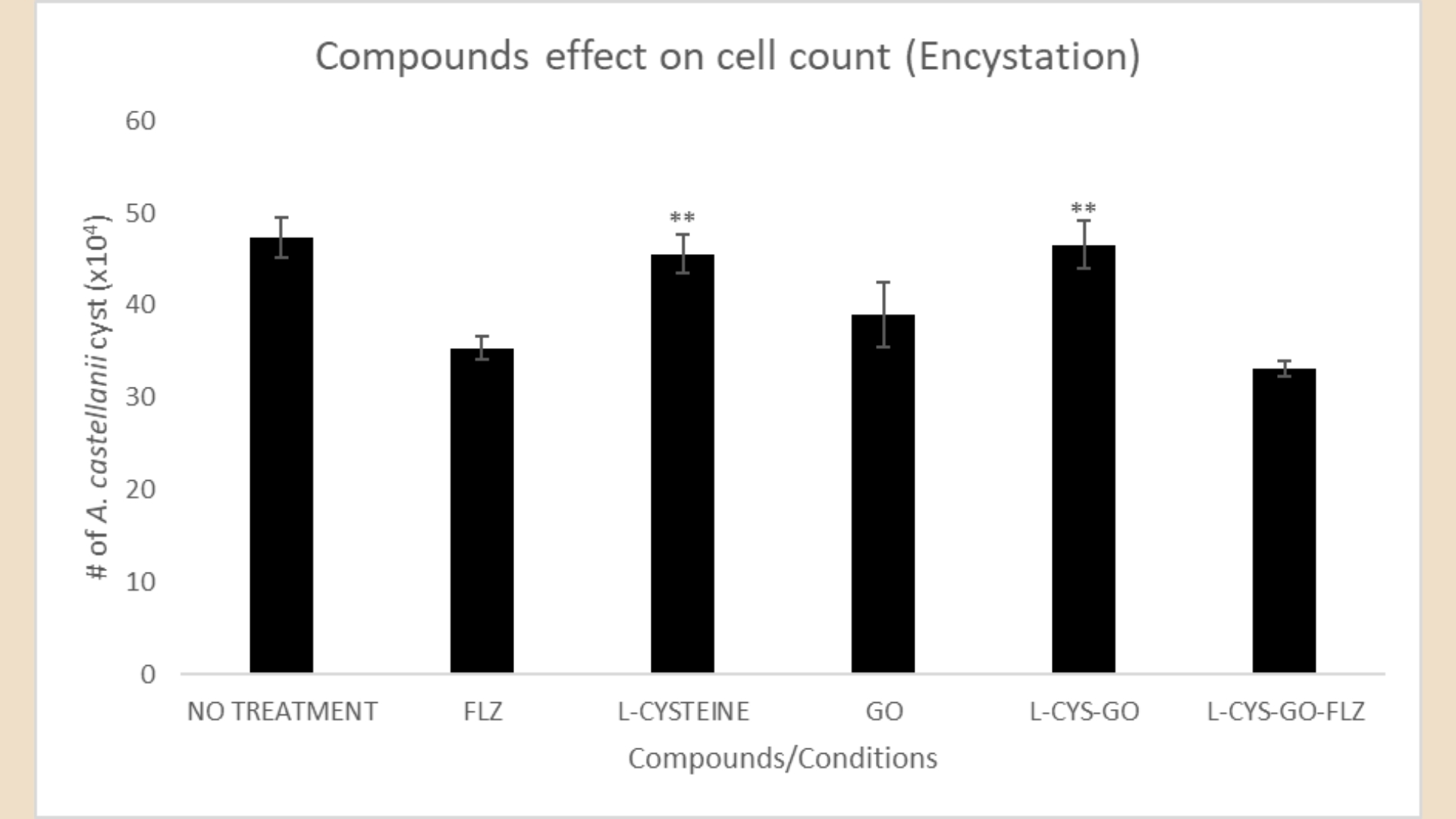
Image settings
Figure#4: (Encystation Assay) Compounds effect on cell count of A. castellanii Cysts.
This Assay was performed to evaluate the potential of the compounds to eliminate or prevent the encystation process (Trophozoite to Cyst) of the amoeba.
As shown in Figure 4 for Encystation Assay, Fluconazole loaded with graphene oxide has slightly more effect than Fluconazole in eradicating A. castellanii Cysts.
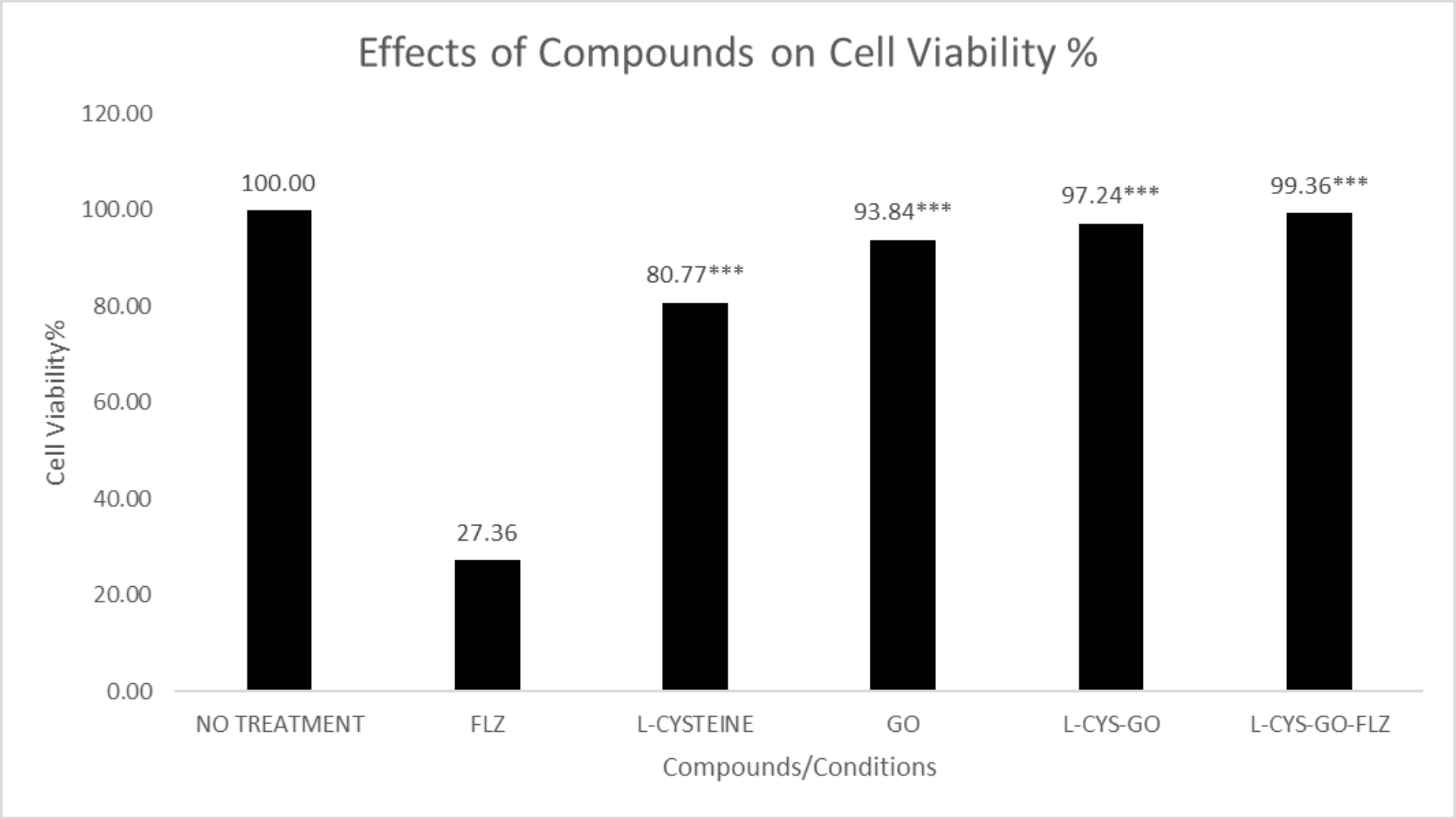
Image settings
Figure#5: Calculated cell viability % of the Compounds on human HaCaT cells.
This Assay was performed to measure the metabolic activity of cells, which can be used as an indicator of cell viability, proliferation, and cytotoxicity. It was used to evaluate the effects of the compounds on the human HaCaT cells.
In Figure 5 for MTT Assay, Fluconazole loaded with graphene oxide has proven to be drastically less toxic towards HaCaT cells in comparison with Fluconazole. The Cell Viability % of Fluconazole is 27.36% while Fluconazole loaded with graphene oxide remains ahead of Fluconazole with a Cell Viability % of 99.36%.
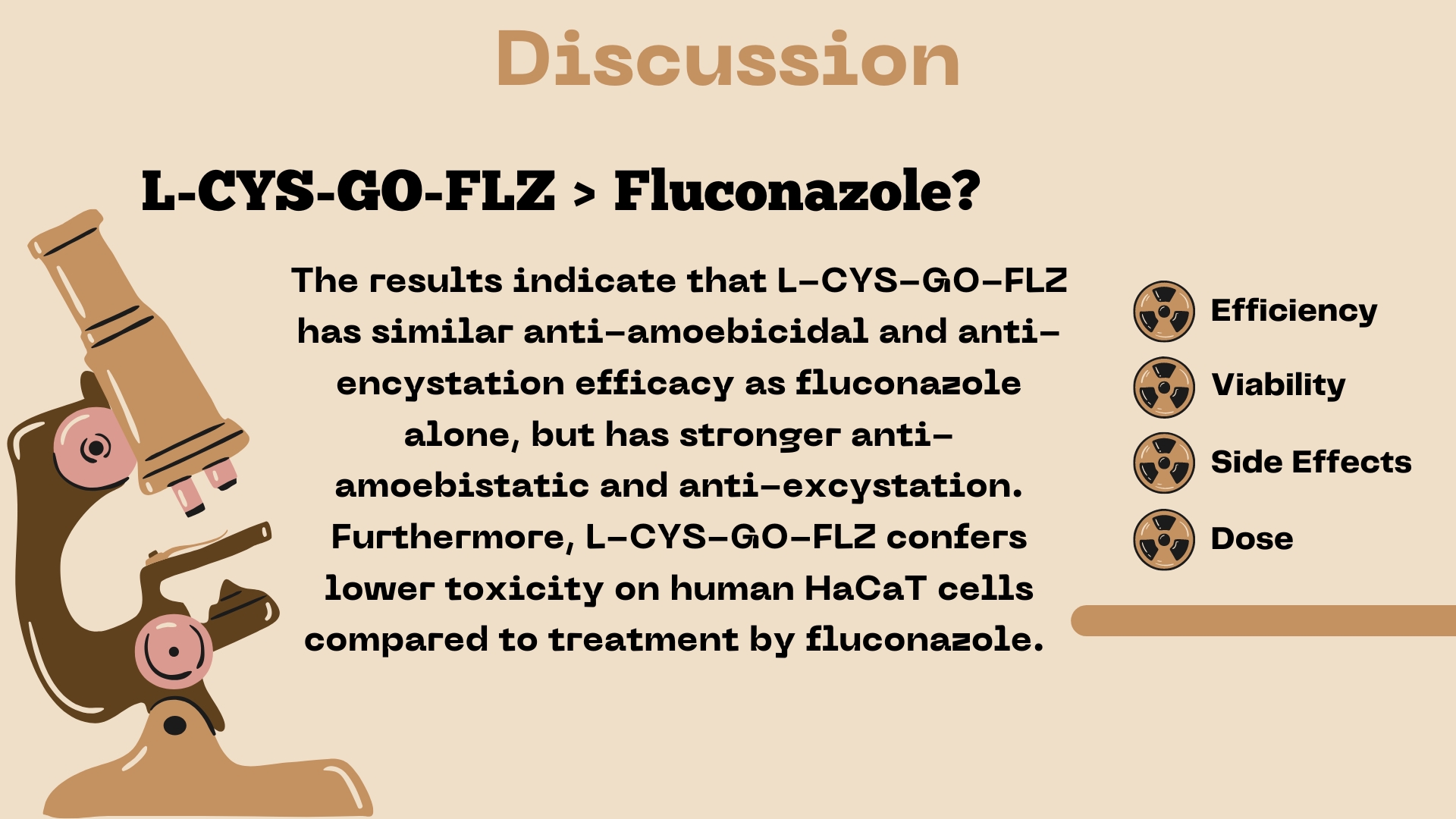
Image settings
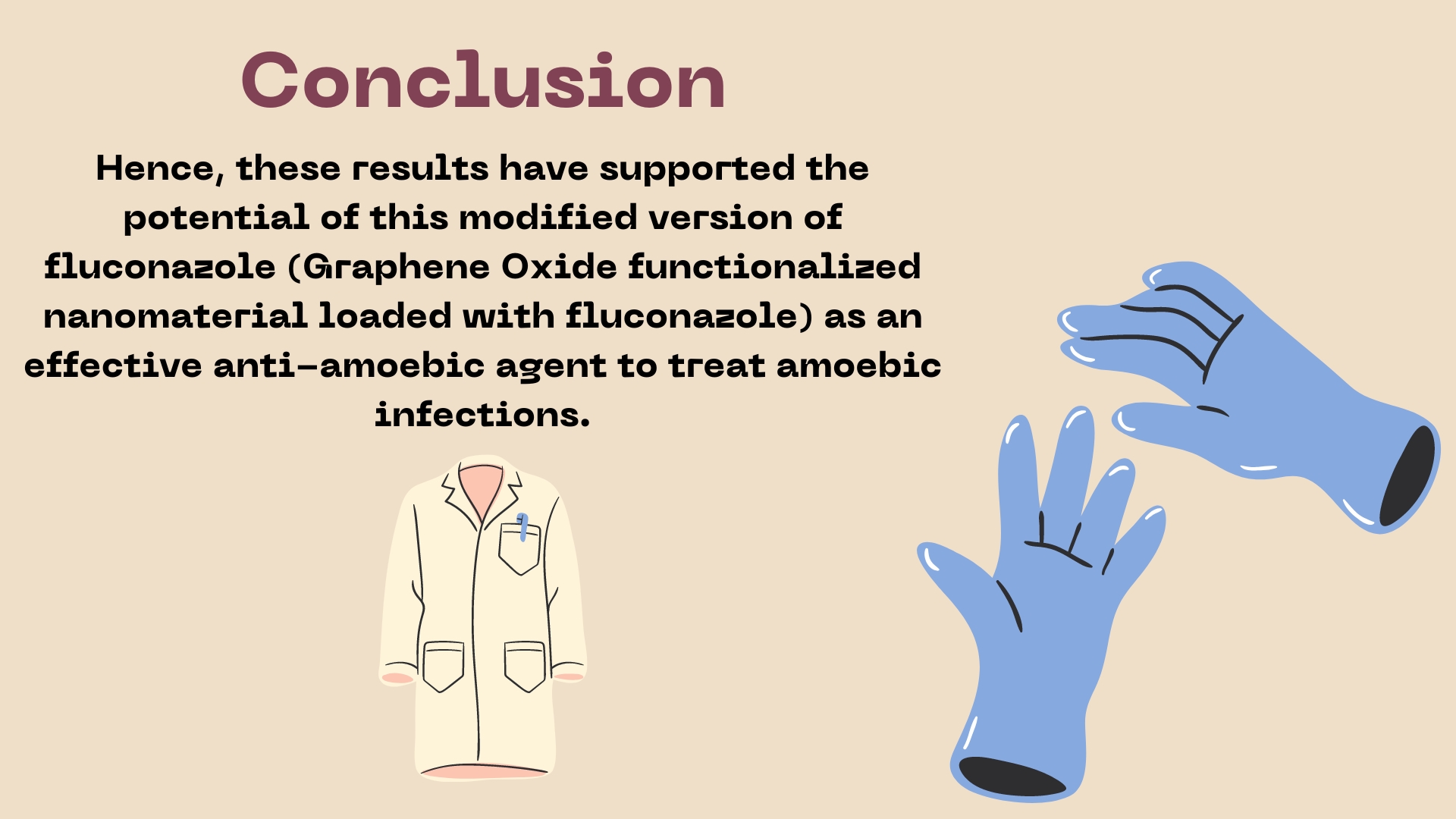
Image settings

Image settings
References
- Li, X., Robinson, S. M., Gupta, A., Saha, K., Jiang, Z., Moyano, D. F., Sahar, A., Riley, M. A., & Rotello, V. M. (2014). Functional Gold Nanoparticles as Potent Antimicrobial Agents against Multi-Drug-Resistant Bacteria. ACS Nano, 8(10), 10682–10686. https://doi.org/10.1021/nn5042625
- Aqeel, Y., Siddiqui, R., Anwar, A., Shah, M. R., & Khan, N. A. (2016). Gold Nanoparticle Conjugation Enhances the Antiacanthamoebic Effects of Chlorhexidine. Antimicrobial Agents and Chemotherapy, 60(3), 1283–1288. https://doi.org/10.1128/aac.01123-15
- Wilczewska, A. Z., Niemirowicz, K., Markiewicz, K. H., & Car, H. (2012). Nanoparticles as drug delivery systems. Pharmacological Reports, 64(5), 1020–1037. https://doi.org/10.1016/s1734-1140(12)70901-5
- Visvesvara, G. S., Moura, H., & Schuster, F. L. (2007). Pathogenic and opportunistic free-living amoebae:Acanthamoebaspp.,Balamuthia mandrillaris,Naegleria fowleri, andSappinia diploidea. FEMS Immunology & Medical Microbiology, 50(1), 1–26. https://doi.org/10.1111/j.1574-695x.2007.00232.x
- Asadi Shahi, S., Roudbar Mohammadi, S., Roudbary, M., & Delavari, H. (2019). A new formulation of graphene oxide/fluconazole compound as a promising agent against Candida albicans. Progress in Biomaterials, 8(1), 43–50. https://doi.org/10.1007/s40204-019-0109-6
- Hoseini-Ghahfarokhi, M., Mirkiani, S., Mozaffari, N., Abdolahi Sadatlu, M. A., Ghasemi, A., Abbaspour, S., Akbarian, M., Farjadain, F., & Karimi, M. (2020). Applications of Graphene and Graphene Oxide in Smart Drug/Gene Delivery: Is the World Still Flat? International Journal of Nanomedicine, Volume 15, 9469–9496. https://doi.org/10.2147/ijn.s265876
- Berman, J. J. (2012). Amoebozoa. Taxonomic Guide to Infectious Diseases, 117–121. https://doi.org/10.1016/b978-0-12-415895-5.00022-2
- Fluconazole Oral: Uses, Side Effects, Interactions, Pictures, Warnings & Dosing - WebMD. (2022). Webmd.com. https://www.webmd.com/drugs/2/drug-3780-5052/fluconazole-oral/fluconazole-oral/details
- PubChem. (2022). Fluconazole. @Pubchem; PubChem. https://pubchem.ncbi.nlm.nih.gov/compound/Fluconazole#:~:text=Fluconazole%20%7C%20C13H12F2N6O%20%2D%20PubChem
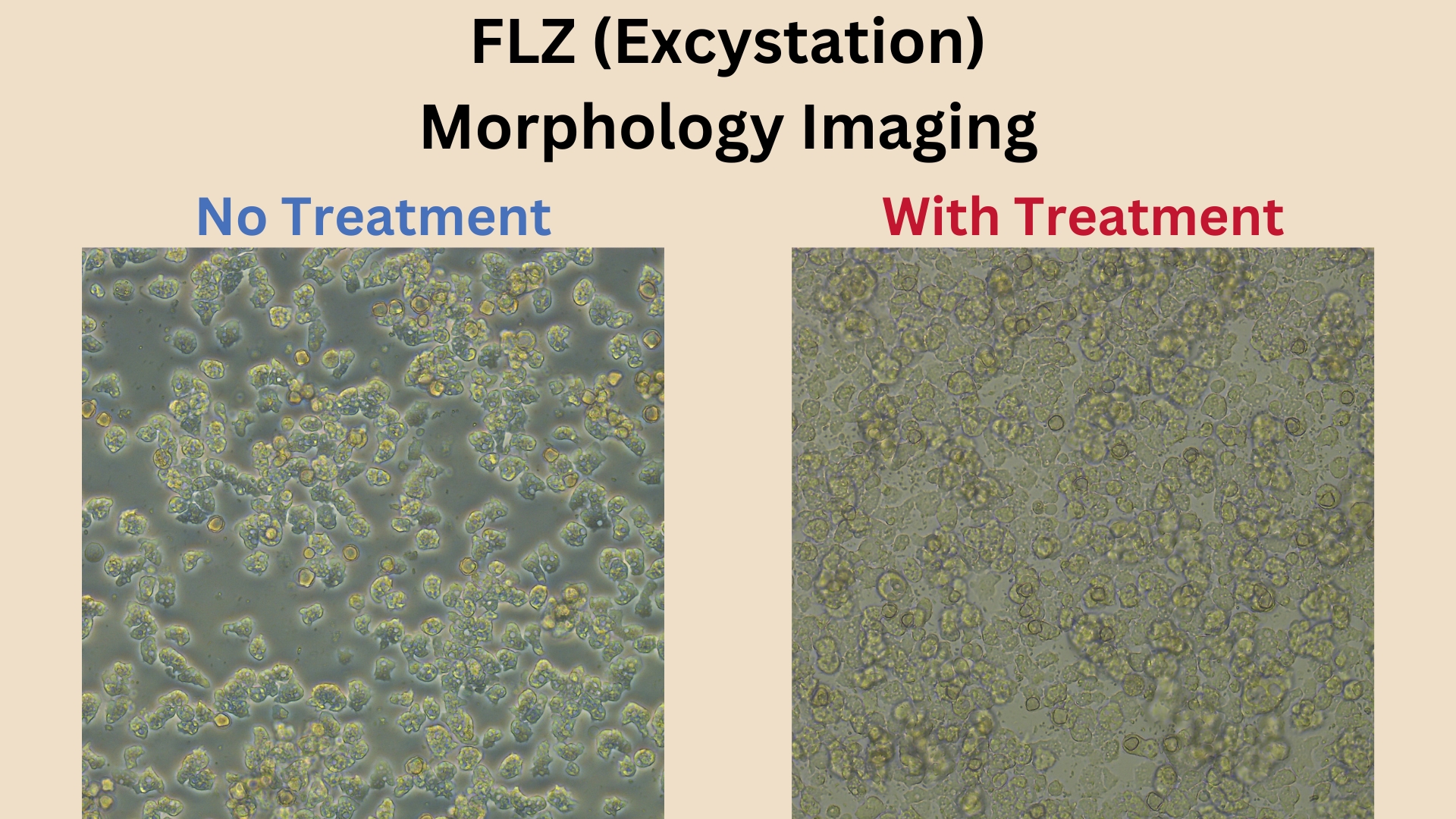
Image settings
